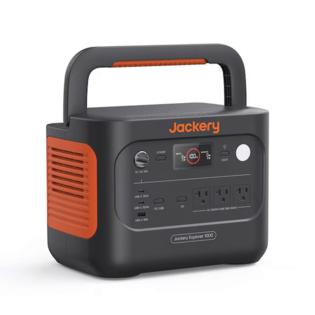Jim Rossman: Planning is the key to buying the right portable power station
Published in Science & Technology News
This week a reader writes concerning portable power stations. I mentioned my mom has one at her home.
“I am a senior dependent on medical devices, i.e. oxygen concentrator, nebulizer. Whole house generators are just too much money. The internet is full of (suggestions), but I don't know which or if any of them would meet my needs. Would you feel comfortable telling me what type of power station your mother has found helpful, or do you have any recommendations?”
Great questions.
Portable power stations are big rechargeable batteries that have power inverters so you can power your electronics during power outages or when you’re away from home, like at the beach or camping.
They come in different sizes with the biggest differences being how much battery capacity they hold (expressed in watt-hours) and how much they can power at one time (expressed in watts).
A very small power station that has a capacity of 250-300 Wh and power up to 600W costs around $300. A larger power station with 1,000 Wh of power and an output of 1,500W costs around $800 and a very big one with 3,000 Wh of battery and a battery capacity of 3,000 Wh and output of 3,600W costs around $2,500.
Once you figure out what you can afford, you’ll need to determine how much power your devices use. Each device that plugs in uses a specific amount of power per hour that it is plugged in.
For instance, I have a CPAP I sleep with and it draws between 30 and 60 watts per hour (depending on if I use the humidifier). At 30 watts per hour, a 300 Wh power station will run that CPAP for 10 hours (30 watts x 10 hours = 300 Watt-hours).
You can do your own calculating. If you wonder how much juice your devices use, you can check the small print on the device label or just Google it.
The next big issue is how you’ll recharge it once the batteries are depleted. If your house is prone to short outages, you may be able to get away with waiting to recharge until the power comes back on.
If you live in an area that might be prone to extended outages after a hurricane, you’ll need to plan on how you’ll recharge each day. Will you be able to drive to a place with electricity? Or maybe you have a neighbor with a gas generator. Or maybe you’d use solar panels if conditions are right, but solar panels are expensive and take up lots of room.
One last thing to consider is how you’ll move it around. These power stations can weigh anywhere from 10 pounds up to 100 pounds or more. The heaviest have wheels. You might want to look into a small dolly to help you move it where you need it.
You might be better off with more than one smaller, lighter power station as opposed to one larger, heavier one.
Portable power stations are great, but you need to do this kind of planning so you buy the right size and have a plan to keep them charged up. If you have any specific questions, feel free to send me an email.
©2025 Tribune Content Agency, LLC.







Comments